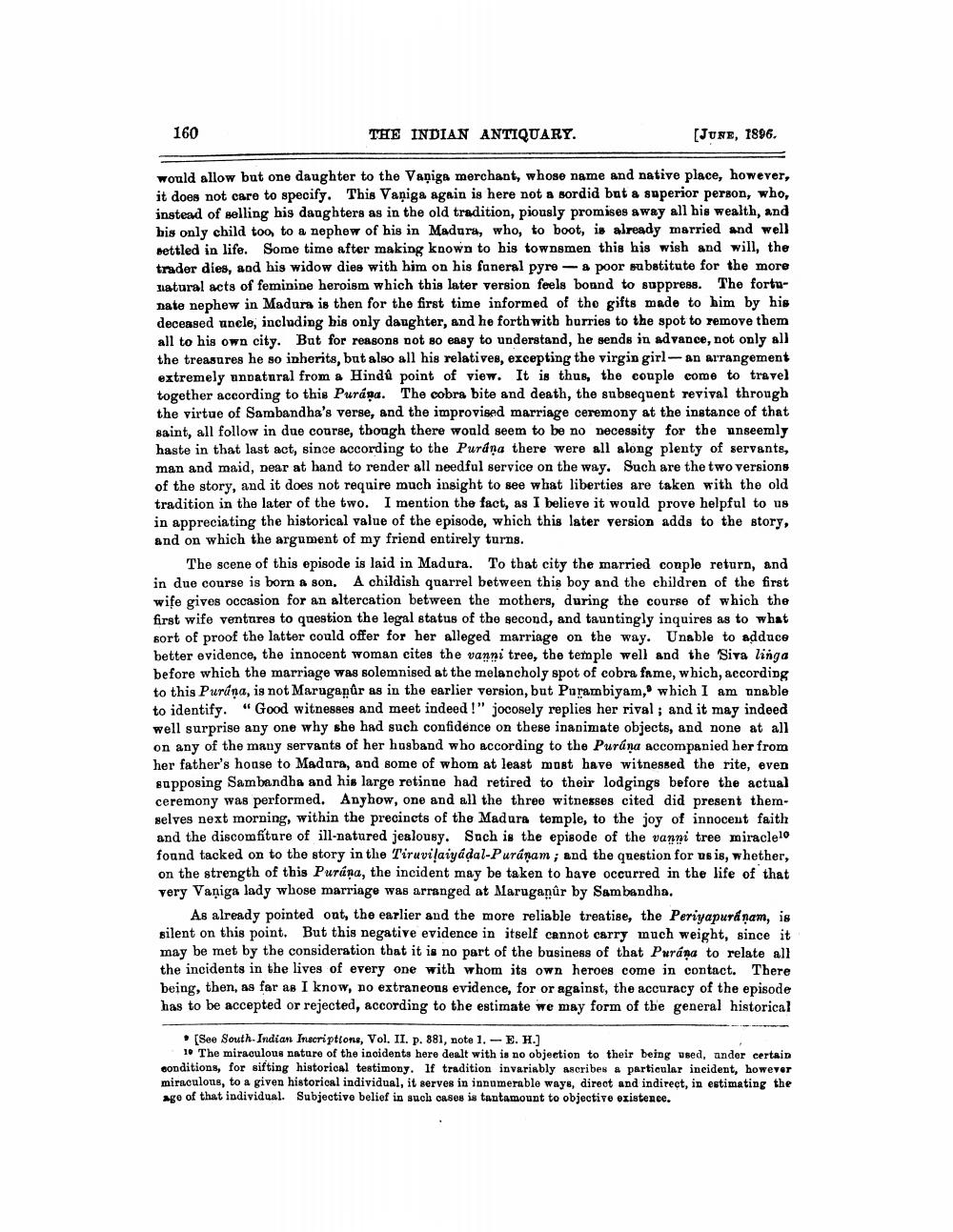________________
160
THE INDIAN ANTIQUARY.
(JUNE, 1896.
would allow but one daughter to the Vaniga merchant, whose name and native place, however, it does not care to specify. This Vaniga again is here not a sordid but a superior person, who, instead of selling his daughters as in the old tradition, piously promises away all his wealth, and bis only child too, to a nephew of his in Madura, who, to boot, is already married and well Bettled in life. Some time after making known to his townsmen this his wish and will, the trader dies, and his widow dies with him on his faneral pyre - a poor substitute for the more zatural acts of feminine heroism which this later version feels bound to suppress. The fortunate nephew in Madura is then for the first time informed of the gifts made to him by his deceased uncle, including his only daughter, and he forth with hurries to the spot to remove them all to his own city. But for reasons not so easy to understand, he sends in advance, not only all the treasures he so inherits, but also all his relatives, excepting the virgin girl-an arrangement extremely andatural from a Hindu point of view. It is thus, the couple come to travel together according to this Purána. The cobra bite and death, the subsequent revival through the virtue of Sambandha's verse, and the improvised marriage ceremony at the instance of that saint, all follow in due course, though there would seem to be no necessity for the unseemly haste in that last act, since according to the Purana there were all along plenty of servants, man and maid, near at hand to render all needful service on the way. Such are the two versions of the story, and it does not require much insight to see what liberties are taken with the old tradition in the later of the two. I mention the fact, as I believe it would prove helpful to us in appreciating the historical value of the episode, which this later version adds to the story, and on which the argument of my friend entirely turns.
The scene of this episode is laid in Madura. To that city the married couple return, and in due course is born a son. A childish quarrel between this boy and the children of the first wife gives occasion for an altercation between the mothers, during the course of which the first wife ventures to question the legal status of the second, and tauntingly inquires as to what sort of proof the latter could offer for her alleged marriage on the way. Unable to adduce better evidence, the innocent woman cites the vanni tree, the temple well and the Siva linga before which the marriage was solemnised at the melancholy spot of cobra fame, which, according to this Purána, is not Maruganur as in the earlier version, but Purambiyam, which I am unable to identify. "Good witnesses and meet indeed!" jocosely replies her rival; and it may indeed well surprise any one why she had such confidence on these inanimate objects, and none at all on any of the many servants of her husband who according to the Purána accompanied her from her father's house to Madara, and some of whom at least must have witnessed the rite, even supposing Sambandha and his large retinae had retired to their lodgings before the actual ceremony was performed. Anyhow, one and all the three witnesses cited did present themselves next morning, within the precincts of the Madura temple, to the joy of innocent faith and the discomfiture of ill-natured jealousy. Sach is the episode of the vanni tree miraclelo found tacked on to the story in the Tiruvilaiyádal-Puránam; and the question for us is, whether, on the strength of this Purána, the incident may be taken to have occurred in the life of that very Vaniga lady whose marriage was arranged at Maruganûr by Sambandha.
As already pointed out, the earlier and the more reliable treatise, the Periyapurá nam, is silent on this point. But this negative evidence in itself cannot carry much weight, since it may be met by the consideration that it is no part of the business of that Purána to relate all the incidents in the lives of every one with whom its own heroes come in contact. There being, then, as far as I know, no extraneous evidence, for or against, the accuracy of the episode has to be accepted or rejected, according to the estimate we may form of the general historical
. (See South Indian Inscriptions, Vol. II. p. 881, note 1.-E. H.)
1. The miraculous nature of the incidents here dealt with is no objection to their being used, ander certain conditions, for sifting historical testimony. If tradition invariably ascribes a particular incident, however miraculous, to a given historical individual, it serves in innumerable waye, direct and indirect, in estimating the Age of that individual. Subjectivo belief in such cases is tantamount to objective existence.




